 “I definitely recommend this trip. It is a fun learning experience, and the memories I have made there I will surely never forget…You also get to hear different types of opinions from your group mates on government issues.” – Josie Smith
“I definitely recommend this trip. It is a fun learning experience, and the memories I have made there I will surely never forget…You also get to hear different types of opinions from your group mates on government issues.” – Josie Smith
 “I definitely recommend this trip. It is a fun learning experience, and the memories I have made there I will surely never forget…You also get to hear different types of opinions from your group mates on government issues.” – Josie Smith
“I definitely recommend this trip. It is a fun learning experience, and the memories I have made there I will surely never forget…You also get to hear different types of opinions from your group mates on government issues.” – Josie Smith
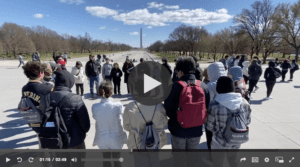 12News travelled alongside a group of Arizona high school students who visited the nation’s capitol to learn necessary skills in government.
12News travelled alongside a group of Arizona high school students who visited the nation’s capitol to learn necessary skills in government.
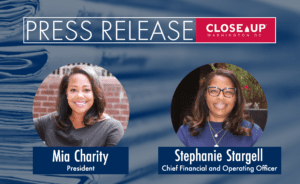 Arlington, VA—The Close Up Foundation is pleased to announce that it has named Mia Charity as its new president and Stephanie Stargell as chief financial and operating officer, effective March 23, 2023.
Arlington, VA—The Close Up Foundation is pleased to announce that it has named Mia Charity as its new president and Stephanie Stargell as chief financial and operating officer, effective March 23, 2023.
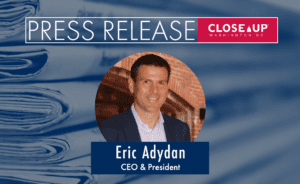 Arlington, VA—The Close Up Foundation is pleased to announce that it has named Eric Adydan as its new chief executive officer and president, effective January 1, 2023. Adydan, a veteran of the Foundation who has served as chief operating officer since 2014, succeeds CEO and President Timothy S. Davis, who retired on December 31, 2022.
Arlington, VA—The Close Up Foundation is pleased to announce that it has named Eric Adydan as its new chief executive officer and president, effective January 1, 2023. Adydan, a veteran of the Foundation who has served as chief operating officer since 2014, succeeds CEO and President Timothy S. Davis, who retired on December 31, 2022.
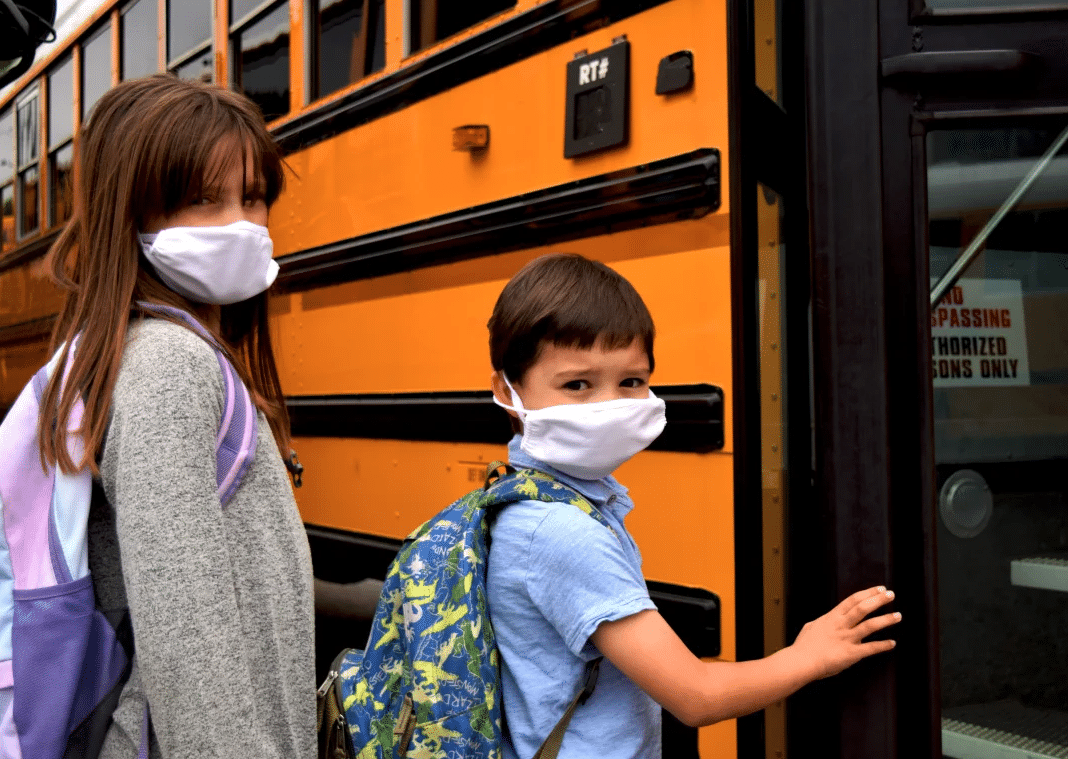 As teachers welcome students back into the classroom, it is important to establish good habits and routines for the new school year. One important habit is incorporating current issues discussions into civics, social studies, and humanities courses. To help teachers get started on the right foot, we’re offering a round-up of some of the most important news stories of the past month and some discussion questions to engage students.
As teachers welcome students back into the classroom, it is important to establish good habits and routines for the new school year. One important habit is incorporating current issues discussions into civics, social studies, and humanities courses. To help teachers get started on the right foot, we’re offering a round-up of some of the most important news stories of the past month and some discussion questions to engage students.
Infrastructure Bill Moves Forward
President Joe Biden’s administration cleared an important hurdle in its efforts to pass a massive infrastructure bill through Congress with a 69-30 vote in the Senate. Although the $1.2 trillion bill still needs House approval before the president can sign it, it has the potential to be the largest infrastructure investment ever passed by Congress.1
The bill needed at least 60 votes to pass the Senate. The Senate is currently split 50-50 between Republicans and Democrats, with Vice President Kamala Harris acting as the tie-breaking vote. This breakdown, combined with Republicans’ use of the filibuster, means that for virtually any legislation to pass the Senate, Democrats must gain the support of at least 10 Republican senators.2 Given how strong the partisan divide in Congress has been for more than a decade, many Americans were skeptical that the Senate could reach any bipartisan agreement, with some urging senators to abolish the filibuster requirement of 60 votes. To the surprise of many, Senate Democrats were able to secure the support of not just ten but 19 Republican senators.3
LEARN MORE about the infrastructure bill and related issues
With the bill now in the House, it is almost a certainty that it will eventually pass but it remains unclear how long that will take and what the bill will contain by that time. Currently, the bill allocates funding for building new roads, bridges, and railways; repairing existing transportation infrastructure; and expanding broadband internet, clean air and water infrastructure, power systems, and pollution clean-up.4 The bill also represents a significant scaling back of the original $2.6 trillion plan, with the biggest changes being in the removal of many of the environmental initiatives.
House Democrats, including Speaker of the House Nancy Pelosi, D-Calif., have said they will not support the new infrastructure bill unless much of the removed environmental funding is added to a $3.5 trillion budget reconciliation bill. Negotiating this process could take weeks if not months. However, since budget reconciliation bills require only 50 votes in the Senate, much of the additional spending could be signed into law with or without Republican support.5
The United States’ Infrastructure Report Card
Discussion Questions
Afghanistan Withdrawal and the Taliban Offensive
In April 2021, President Biden announced that he would press ahead with the withdrawal of all remaining U.S. troops from Afghanistan, a move first sought by President Donald Trump’s administration. President Biden set September 11, 2021, as the deadline for withdrawal, coinciding with the 20th anniversary of the 9/11 attacks (which were the impetus for the conflict).6 The United States has had combat troops continuously operating in Afghanistan since October 7, 2001, making this conflict the longest continuous military conflict in U.S. history.7

In recent weeks, the Taliban, a militant group of Islamic fundamentalists, has launched successful offensives across Afghanistan as U.S. troops and officials have withdrawn. Prior to the war in Afghanistan, the United States assisted the Taliban in its efforts to combat an invasion by the Soviet Union in the 1980s. After repelling the Soviets, the Taliban became the ruling authority during the 1990s. The group also forged connections with and harbored al-Qaeda, the terrorist organization controlled by Osama bin Laden that carried out the 9/11 attacks.8
LEARN MORE about the modern history of Afghanistan
The U.S.-led invasion of Afghanistan overthrew the Taliban in 2001. However, despite U.S. support over the past 20 years, the new government of Afghanistan has struggled to govern the country effectively as it has been plagued by corruption and infighting. The U.S.-trained Afghan military and police forces have not fared any better, offering little resistance to the Taliban’s resurgence. In recent days, the Taliban seized control of Kabul, the Afghan capital, and declared itself the only legitimate government of the country.9 Many Afghanis who worked with U.S. forces now fear for their lives, as the Taliban is notorious for torturing and executing those whom it considers to be traitors.10 The swift pace of the Taliban takeover, downplayed as “highly unlikely” by President Biden in July, has prompted both the United States and the United Kingdom to deploy thousands of additional troops to Afghanistan to protect evacuation efforts out of Kabul.11
LEARN MORE directly from lawmakers about the withdrawal from Afghanistan
Discussion Questions
The Delta Variant and Mask Mandates
On May 13, 2021, President Biden celebrated an end to nearly all outdoor mask mandates and most indoor mask mandates for individuals fully vaccinated against COVID-19. This announcement was heralded as a turning point on the road “back to normal.”12 However, as a vaccination rates began to plateau, it became apparent that a significant portion of the U.S. population (18 percent) had no intention of getting vaccinated.13 Disease experts feared that with such a large cohort of people refusing the vaccines, COVID-19 would continue to mutate and spread.14
There have been dozens of such mutations, with more virulent and contagious strains emerging. Particularly widespread in the United States and abroad is the Delta variant and its subvariants. The Delta variant is estimated to be twice as contagious as other variants, with some data suggesting it might cause more severe illness in unvaccinated persons than previous strains.15 It is important to note that all available data indicates that the COVID-19 vaccines are highly effective against the Delta variant. Almost all COVID-19 cases, hospitalizations, and deaths have occurred among people who are not vaccinated or not yet fully vaccinated.16 Still, as infection and hospitalization rates rose, the Centers for Disease Control and Prevention (CDC) updated its guidance for indoor masking and social distancing.
LEARN MORE about the impact of vaccination
In August, Arkansas set a record for hospitalizations, while health officials in Mississippi said that the state’s hospital system could collapse in a matter of days if the current caseload trajectory continues.17 This resurgence of COVID-19 cases across the country has prompted some areas to issue new mask mandates and others to refuse to issue new rules that follow federal guidance and CDC recommendations.18 Recently, some schools in Texas, Florida, and other highly impacted states refused to comply with their governors’ bans on mask mandates. And some schools and businesses around the country have begun to mandate vaccination for their employees and patrons.19
HEAR FROM lawmakers about the impacts of COVID-19 on students
Discussion Questions
The IPCC Climate Report
On August 9, 2021, the United Nations’ Intergovernmental Panel on Climate Change (IPCC), a group of thousands of climate experts from 195 member nations, issued a dire report on the state of Earth’s climate and its implications for humanity’s immediate and long-term survival.20 The report states that human beings are “unequivocally” causing climate change and that the world may inevitably cross the 1.5oC overall temperature increase that has long been cited as a point of no return by climate scientists.21
Drawn from data from over 14,000 studies, the IPCC report details that once-in-50-year heatwaves now occur at least once a decade, and that historic flooding, hurricanes, and drought are to be expected for decades if not centuries to come. UN Secretary General António Guterres called the report a “code red for humanity.”22
HEAR FROM lawmakers about their views on climate change and how to address it
Currently, vast stretches of the North American Pacific Coast, Siberia, the Mediterranean, and dozens of other places are experiencing wildfires of unprecedented scope.23 In July, historic flooding occurred in Western Europe, killing more than 200 people with almost 200 more still missing.24 And with the COVID-19 pandemic still ongoing, disease and climate experts warn that climate change will contribute to new outbreaks of illnesses, particularly as mosquito populations spread with warmer weather.25
Leaders from around the world will meet in Glasgow, Scotland, in November 2021 for a climate change conference. Climate activists and scientists are hopeful that leaders will be receptive to more aggressive policies to cut down on carbon emissions. The United States rejoined the Paris Agreement in February 2021, but climate advocates now argue that the targets set under that agreement are inadequate.26
VIEW the IPCC report and its implications
Discussion Questions
As always, we encourage you to join the discussion with your comments or questions below!
Related Blog Posts:
Build it and They Will Come – The Biden Infrastructure Plan
How Can We Overcome Vaccine Skepticism?
Time to Reform the Filibuster?
Sources
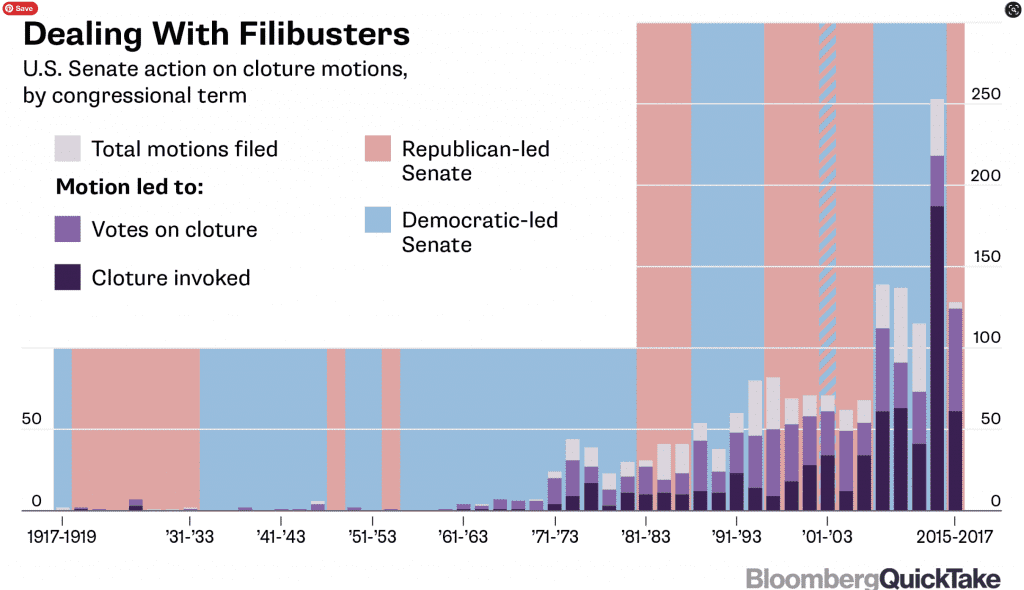
The Senate is again considering changing its rules regarding the filibuster, a parliamentary procedure that gives individual senators the power to shape—and even block—legislation. The filibuster is “a loosely defined term for action designed to prolong debate and delay or prevent a vote on a bill, resolution, amendment, or other debatable question.”1
The filibuster is not in the Constitution; rather, it was an accidental byproduct of a rule change in 1806.2 In 1917, the Senate changed its rules so a filibuster could be ended by a two-thirds majority vote of senators; in 1975, the Senate lowered that threshold to three-fifths.3 Filibusters, or the threat of a filibuster, used to be rare. These days, the minority party uses the filibuster as a matter of routine, essentially creating a 60-vote threshold for most bills to pass.
Today, many Senate Democrats are considering removing the filibuster altogether, meaning that any legislation would require a simple majority vote to pass the Senate. It is not guaranteed that Democrats would be able to do this, as at least two members of their party, Senators Kyrsten Sinema, D-Ariz.,4 and Joe Manchin, D-W.V., have not endorsed filibuster reform. Almost all Senate Democrats support another position, allowing for a “talking filibuster” in which a member could hold the floor in order to delay or block a vote. Under this proposal, individual senators would have a path to make their voices heard, but not all legislation would require 60 votes to pass the Senate.
WATCH: The history of, and debate about, the filibuster, from the Washington Post
Arguments for Keeping the Filibuster
Those who want to keep the filibuster argue that this procedure empowers each individual senator to have a voice on all legislation, meaning that every state, no matter how small and no matter the party affiliation of its senators, has a say in policymaking.6 In an argument against ending the filibuster, former Senator Mike Enzi, R-Wyo., wrote that the filibuster can do as much to ensure compromise as it does to create division. He pointed out that, because of the threat of the filibuster, he and Senator Ted Kennedy, D-Mass., were able to work together to produce 38 bipartisan bills in 2005 and 2006 alone.7 Supporters of the filibuster also note that the Senate is intended to be a deliberative body that cools the passions of the House of Representatives.8 In other words, the House majority is able to act quickly—sometimes too quickly—and it is up to the Senate to weigh all matters carefully and deliberately and to build a 60-vote consensus.
Arguments for Ending the Filibuster
Advocates of ending the filibuster argue that this procedure was never intended to be commonplace, and that it was only a clerical error that allowed it to exist at all.9 Critics note that the filibuster was a rarely used tool until recent years, and that its use exploded during the administration of President Barack Obama. As such, they argue that the founders never intended the Senate to be so gridlocked.10 Some proponents of ending the filibuster argue that it has been a tool of racism and white supremacy, with Princeton historian Kevin Kruse saying “it’s been a tool used overwhelmingly by racists” to protect slavery and Jim Crow segregation.11
Discussion Questions
Further Reading and Resources
As always, we encourage you to join the discussion with your comments or questions below!
Sources


On Saturday, November 7, most major media outlets declared Joe Biden the winner of the 2020 presidential election.1 While the Biden team has already begun its informal transition, it has not yet been granted access to intelligence briefings, office space, or other elements of a formal transition.2 This formal transition cannot happen until the General Services Administration issues a “letter of ascertainment.”3 President Donald Trump has not formally conceded the election, as his campaign is continuing to file lawsuits, so far unsuccessfully, around the country.4
WATCH: “What Is the GSA, and What Role Does It Play in the Presidential Transition?” from CBS News
Biden’s inauguration will take place on January 20, 2021.5 While the outcome of the election is all but certain,6 much can still happen between November and January to shape the early months of the Biden administration. The presidential transition to a new administration is a significant undertaking, involving every federal agency, staff members in the current administration, and staff members in the incoming administration. In the midst of an economic downturn, the COVID-19 pandemic, and an effort to develop, produce, and distribute a vaccine, a smooth transition may be even more difficult and necessary in 2020.7
What Happens During a Transition?
In order to be ready to hit the ground running, there are many things that a president-elect must accomplish during the transition. According to the nonpartisan Center for Presidential Transition, these are the primary goals of a new president during this important time:
While this list seems manageable, it relies heavily on the cooperation of the outgoing administration. Dr. Anthony Fauci and other public health officials are raising alarms over the decision by the Trump administration to block or delay transition efforts.9 Some experts are also concerned that the Trump administration’s behavior could harm national security.10 However, President Trump’s national security advisor has promised a professional transition.11
LISTEN: “How Presidential Transitions Usually Happen and What Could Be Different This Time,” from NPR
The weeks ahead may be pivotal to ensuring a smooth transition from the Trump administration to the Biden administration. The transition is an aspect of government that many people take for granted, and, except for the appointment of officials who require Senate confirmation, transitions take place largely out of the public eye. However, it seems that this transition will be closely watched for evidence of cooperation between political rivals.
Discussion Questions
Further Reading:
 On November 6, 2017, businessman Andrew Yang began a presidential campaign centered on a signature policy, Universal Basic Income (UBI).1 If put in place, this UBI or “Freedom Dividend” would give every adult American $1,000 a month, no questions asked.2 The idea captured some voters’ imaginations; although Yang ultimately suspended his campaign after a poor showing in the Iowa caucuses and the New Hampshire primary, UBI has never been more popular.3
On November 6, 2017, businessman Andrew Yang began a presidential campaign centered on a signature policy, Universal Basic Income (UBI).1 If put in place, this UBI or “Freedom Dividend” would give every adult American $1,000 a month, no questions asked.2 The idea captured some voters’ imaginations; although Yang ultimately suspended his campaign after a poor showing in the Iowa caucuses and the New Hampshire primary, UBI has never been more popular.3
What Is UBI?
UBI is a form of government assistance wherein every adult citizen is automatically entitled to regular payment from the government. In most proposed UBI systems, this money does not have to be spent on specific goods or services; it can be used by recipients for anything they deem necessary.4 Some UBI systems call for replacing basic income entirely, making full-time employment largely optional. Others favor a more modest approach, which would supplement rather than replace individual income.
How Would Yang’s Model Work?
The current median annual individual income in the United States is approximately $33,000; the poverty line stands at just under $13,000 per year.5 At $12,000 per year, Yang’s UBI would still fall below the poverty line and therefore would not replace the need for employment for most people. However, for an individual living in poverty, an additional $1,000 a month would essentially double their income. Yang also argues that entitling adults to $1,000 per month would mean that unpaid jobs, such as stay-at-home parenting and volunteering, would no longer necessitate the same sacrifice.6 Yang also suggests that UBI could be a means of enabling people to make more time in life for personal development and interests, as they would not have to focus so much on acquiring money.7
According to Yang’s policy briefs, his UBI policy would cost $2.8 trillion per year, which is roughly 70 percent of the federal government’s current annual budget.8 Yang’s policy proposal takes other factors into account, which he claims would bring the net cost down to $320.5 billion per year. His policy would raise additional revenue by imposing a new value-added tax (VAT, a type of tax on products that consumers buy).9 However, economic experts do not agree that the cost of the program could be offset sufficiently.10
Why Is Yang Advocating for UBI?
Yang has tied the need for UBI to the threat of automation in what he calls “The Fourth Industrial Revolution.”11 Unlike previous revolutionary changes owed to technology, Yang suggests that advancements in artificial intelligence will result in jobs being lost at a higher rate than they can be replaced. On his policy site, Yang argues that in the next 12 years, one in three Americans are at risk of not just losing their jobs but having their profession itself cease to exist.12 For example, Yang believes that driverless vehicles will render trucking jobs obsolete and leave truckers with a skill set and job history that is no longer relevant when they need to find new employment. UBI could be a way to offset the harm of job loss and provide individuals with a safety net as they find new jobs or learn new skills.
What Is the Criticism of UBI?
Beyond the high cost of implementing UBI, criticisms tend to center on the implications that such a system would have on the economy. Some have suggested that UBI would disincentivize hard work and undermine the American work ethic.13 Others point to studies which show that people receiving unemployment benefits devote more time to leisure than job-hunting.14 Participants in similar smaller-scale programs were shown to be less productive and less motivated to work.15 Finally, some economists argue that prices on everything from food to rent would increase, reflecting the extra money that people would have. Therefore, little would change other than the imposition of new government spending.16
The Future of Universal Basic Income
Universal Basic Income is unlikely to come before Congress anytime soon, especially with its best-known advocate no longer in the race for president. However, prior to Yang’s candidacy, a minority of voters supported or had even heard of UBI, whereas recent polling indicates that a slim majority of voters favor the idea.17 UBI is being piloted in several U.S. cities and is far more popular in Europe, with pilot programs already underway in several countries. While this is far from the first time UBI has been promoted, it is not outside the realm of possibility that with changing economic realities, the policy could continue to gain support among policymakers.18
Discussion Questions
 “There’s a clear difference between politics and a crime,” Michael Levy told the Supreme Court in January,1 when he made arguments in a case about New Jersey’s “Bridgegate” scandal. As the justices considered whether or not a public official commits fraud by obfuscating the “real reason”2 behind a decision, they asked both sides tough questions and did not split along ideological lines.3 The Court’s decision could narrow or expand corruption prosecutions against politicians. So we explore the questions, do politicians lie? And is it a crime?
“There’s a clear difference between politics and a crime,” Michael Levy told the Supreme Court in January,1 when he made arguments in a case about New Jersey’s “Bridgegate” scandal. As the justices considered whether or not a public official commits fraud by obfuscating the “real reason”2 behind a decision, they asked both sides tough questions and did not split along ideological lines.3 The Court’s decision could narrow or expand corruption prosecutions against politicians. So we explore the questions, do politicians lie? And is it a crime?
The Bridgegate Scandal
The George Washington Bridge is the world’s busiest, carrying 250,000 to 300,000 vehicles daily.4 In 2013, after Mark Sokolich, the Democratic mayor of Fort Lee, N.J., would not endorse the reelection bid of then-Governor Chris Christie, a Republican, officials on Christie’s staff concocted a fake traffic study to shut down all but one bridge lane dedicated to Fort Lee.5 Unbeknownst to local officials, closures took effect on the first day of school, resulting in massive traffic backups that included public safety vehicles seeking a missing child and responding to a cardiac arrest.6 The Bridgegate scandal lasted four days.7 At trial, Bridget Anne Kelly and William E. Baroni Jr. were convicted on the basis of evidence that included Kelly’s now-infamous email announcing it was “time for some traffic problems in Fort Lee.”8
Politics or a Crime?
The deceptive study misused $5,4009 worth of Port Authority employee resources.10 Kelly’s attorney thinks prosecutors incorrectly applied fraud statutes11 since the officials reallocated public resources to another public use12 and did not “receive payments or kickbacks.”13 Government lawyers countered that Baroni commandeered resources14 because he lacked authority to realign lanes.15
Kelly’s attorney, Jacob Roth, says that if a hidden political lie or motive or lie could send a public official to prison,16 it “casts a pall over routine political conduct.”17 Roth offered hypothetical examples, such as a police chief publicly stating concerns about crime to advocate for more officers, while the real goal is to gain favor with a police union.18 “We don’t want public officials acting for personal … partisan or political reasons,” said Roth. “But … the remedy for that is not the federal property fraud statutes.”19 Roth’s preferred remedy is political consequences: Bridgegate damaged Christie’s in-state popularity and his 2016 presidential bid.20
Prosecuting Corruption
The Supreme Court seemed to apply this reasoning in 2016 with an 8-0 unanimous vacating of former Governor Bob McDonnell’s (R-Va.) corruption conviction,21 limiting bribery laws by deciding that McDonnell’s acceptance of $175,000 in money and luxury items (including a Ferrari)22 was not criminal since, as McDonnell’s lawyers said, he only provided “routine political courtesies,”23 such as setting up meetings, in exchange for the items. McDonnell’s lawyers argued, “Mere ingratiation and access are not corruption.”24 Responding to the ruling, Noah Bookbinder, executive director of Citizens for Responsibility and Ethics in Washington, said, “The Supreme Court essentially just told elected officials that they are free to sell access to their office to the highest bidder,”25 and that “if you want the government to listen to you, you had better be prepared to pay up.”26
The McDonnell case reflected many justices’ concerns over “prosecutors’ overly expansive interpretation of federal fraud and corruption laws,”27 concerns echoed in recent decisions that protected “small-time criminal defendants swept up by large-scale prosecutions.”28 Kelly, a single mother of four,29 says she is being scapegoated,30 claiming that Christie (who has called this case politically motivated) knew of the scheme.31
Former federal prosecutor Frank O. Bowman III sees this judicial trend as the Supreme Court “taking ‘an unduly protective view of official misconduct.’”32 Bowman adds, “The notion that what is otherwise plainly a crime becomes permissible because it has a political motive strikes me as just daft.”33 Bowman believes prosecutors need reasonable leeway with fraud statues “to keep up with the crooks, particularly the crooks in public office.”34
A decision in Kelly v. United States is expected in June.
Discussion Questions:

What Should You Watch for in the Democratic Primaries?
The next month features four nominating contests: the Iowa caucuses (February 3), the New Hampshire primary (February 11), the Nevada caucuses (February 22), and the South Carolina primary (February 29).1 A great deal of polling has been done to determine voters’ favorites in these contests, particularly in Iowa and New Hampshire. However, looking at current aggregate polling for those two states, the probable outcome is anything but clear:

At first glance, the numbers above indicate that Senator Bernie Sanders (I-Vt.) has an edge in both New Hampshire and Iowa primary elections, but there are several potential confounding factors. For one, these rankings have alternated for months, with Sanders, former Vice President Joe Biden, former South Bend Mayor Pete Buttigieg, and Senator Elizabeth Warren (D-Mass.) all having occupied the top spot in each state at least once since primary season began in 2019.4, 5
Second, a number of voters in Iowa and New Hampshire have not yet decided on a candidate. Recent polling indicates that as many as 60 percent of voters in those states are undecided, and that at the very least, a sizable minority of voters still remain uncommitted.6
What about the Republican Party?
As the sitting president, President Donald Trump is all but guaranteed to be the Republican nominee (no sitting president has lost the nomination since President Franklin Pierce in 1852).7 Several states have even decided not to have Republican primaries or caucuses at all, despite the fact that several candidates are technically running against President Trump.8
How Does 2020 Compare to Other Primary Seasons?
In 2016, polling showed former Secretary of State Hillary Clinton with a small but clear lead over Sanders in Iowa; in New Hampshire, Sanders was much further in front of Clinton. When the time came for voting, Clinton barely beat Sanders in Iowa (by 0.25%); in New Hampshire, Sanders handily beat Clinton and even did slightly better than the pre-election polls had suggested.
On the Republican side in 2016, now-President Trump slightly led Senator Ted Cruz (R-Texas) in polling, but Cruz ultimately beat Trump by 3.3%. In New Hampshire just over a week later, Trump had a significant lead in the polls and did slightly better than the polls predicted when votes were cast.

In many ways, the 2020 Democratic primary season is more similar to the 2016 Republican primary season. In each, the party had a large field of candidates at first; by the time primary voting began, there were still several viable candidates. Republicans in 2016 also had a clear sense of running against Clinton in the same way that Democrats in 2020 know they will be running against President Trump.
So, Why Does All of This Matter?
A victory in Iowa or New Hampshire does not guarantee a candidate’s victory overall. However, a strong performance or an unexpected result sometimes makes or breaks a campaign. Winning the first contest in Iowa grants legitimacy to a candidate, especially if that candidate has never run in a presidential primary (like Buttigieg or Warren). Winning one or both contests would prove that a candidate could compete with more established candidates, like Biden or Sanders. For example, people cite the relatively unknown Senator Barack Obama’s win over the widely known Clinton in Iowa in 2008 as a turning point in the race between them.11
Alternatively, a win in Iowa and/or New Hampshire for Biden or Sanders could help solidify their positions and signal to other candidates that the time has come to rally around them. On the other hand, losing, or even just barely winning, in Iowa and New Hampshire could have negative consequences for their arguments, especially if they lose out to newcomers like Buttigieg or Warren.
Of course, it’s also possible that the results of Iowa and New Hampshire could have little significance at all. The two remaining contests in February can also reinvigorate a campaign. Governor Bill Clinton (D-Ark.) famously lost both Iowa and New Hampshire in 1992, but his large margin of victory in South Carolina less than a month later earned him the nickname “The Comeback Kid” and helped propel him to the nomination.12 In addition, March sees many more contests dealing with much larger populations, and the results of those primaries and caucuses will likely make a frontrunner clear.
Discussion Questions: